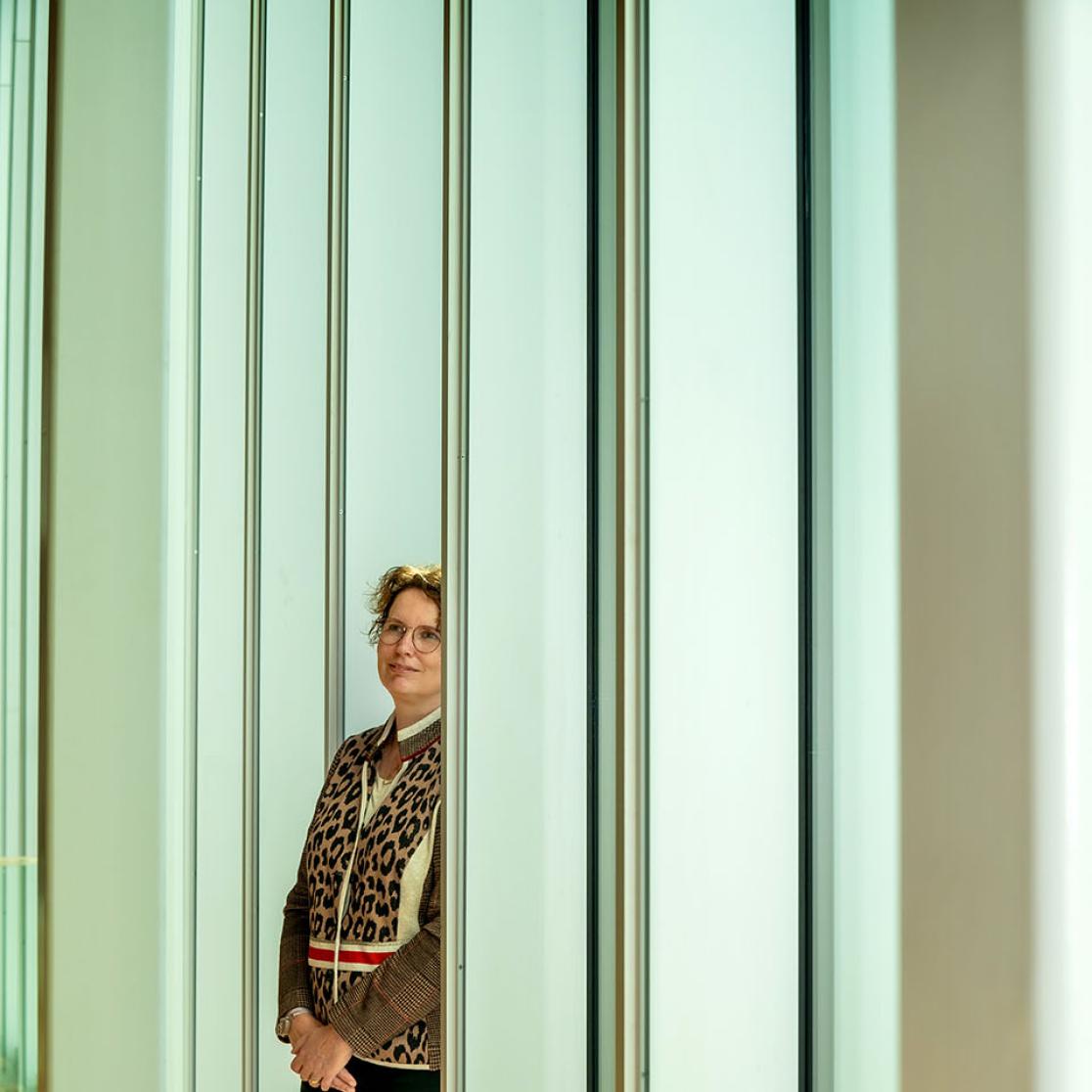“How sustainable is it? That is the question”
Professor Yvonne van der Meer is investigating how companies can improve the sustainability of their products. She analyses every material, exposing the lifecycle in its entirety. “Everything has an effect, even additives such as dyes and plasticisers.”
Van der Meer kicked off her inaugural lecture on 11 June 2021 with a reference to Shakespeare’s ‘To be or not to be? That is the question.’ The sustainability of a product is rarely easy to pin down, but that, in her view, is what makes her field so interesting. With unbridled enthusiasm, she explains the challenges of the circular economy and the broad perspective required for her research.
Career switch
The Aachen–Maastricht Institute for Biobased Materials (AMIBM) was established on the Chemelot Campus fewer than five years ago. Van der Meer was one of the founders, and now holds sway as scientific co-director. The route she took to arrive at where she is today was unconventional, but as she sees it, logical. Until 2015, she was a policy adviser at Maastricht University. She helped to bring research on biobased materials to UM and launched the new master’s programme in this field. Then her career took a different turn: she decided to start doing research herself.
Biobased ≠ sustainable
“All these researchers were saying: I want to work on biobased materials because they’re so sustainable. But I’d been exploring the field and found that it’s sometimes far from it. Biobased doesn’t automatically mean sustainable—a great deal of work is still needed to get from biobased materials to sustainable materials. It occurred to me that there should be a research group focusing on that topic. But nobody was keen on starting it, and then the dean said: you’ll have to do it yourself, or it won’t happen. That’s when I made the switch to research. Since then I’ve been combining my background in chemistry with an interest in sustainability.”
Product lifecycle
Van der Meer’s research group conducts research into the lifecycle of products, from raw material to finished product and beyond, including recycling and waste processing. She collects data on every step and performs complex calculations. “For a good sustainability analysis you need data on all processes and materials, including additives such as dyes and plasticisers. Thirty percent of product packaging can be made up of these types of additives. But data on all these substances are not yet included in databases. Nor is information on alternative raw materials, such as new biobased materials or waste products. Through our projects, we supplement these databases. You can then draw on that information when developing a new product.”
Biobased doesn’t automatically mean sustainable—a great deal of work is still needed to get from biobased materials to sustainable materials.
From cradle to cradle
Van der Meer uses all these data to calculate CO2 and nitrogen emissions. She also considers other forms of environmental impact, such as water use and the risk of environmental disasters. Based on her findings, she then looks for ways to increase the circularity of a product. “From cradle to grave, or better yet: from cradle to cradle. Circularity involves much more than just recycling, which is mainly limited to product materials. You can also extend the lifespan of the product, or reuse or remanufacture it.”
Making gains
Her analyses occasionally throw up surprising conclusions. A new product may be more durable than the old one in some respects, but not in others. “That’s a difficult message to pass on to product developers. They usually want a simple conclusion on which to base their decision making. The good news is that I can often point out where gains can be made, preferably during a project rather than after. The product development may take a little longer, but at least you know it’s been done well.”
Broader perspective
The more the newly appointed professor explores product lifecycles, the more connections she sees between different cycles. For example, when certain product materials are recycled, the environmental impact is simply transferred to the lifecycle of the new product. This defers rather than prevents environmental damage.

“We need to zoom out further to understand how we can reduce the environmental impact. Then we can zoom in again to make choices for the product we’re currently working on. For example, a new researcher in my group will investigate how we can best model recycling. It doesn’t make things any easier, but that’s exactly what I like about this research.”
Becoming a professor
Before Van der Meer returned to research, she never imagined becoming a professor. “There’s this idea that once you’ve left science you’ll never come back. Academia is like that everywhere, focused on how many publications you have to your name. But the emphasis should be on quality and whether you’re a good leader and teacher. So I’m very happy to have been given this opportunity. As far as I’m concerned, it shouldn’t be an exception in the academic world.”
By: Pauline van Schayck (text), Harry Heuts (photography)vvvvvvvvvvvvvvvv
Circularity involves much more than just recycling, which is mainly limited to product materials. You can also extend the lifespan of the product, or reuse or remanufacture it.
Also read
-
Meet our women in science
On International Women and Girls in Science day we like to highlight some of UM's women in science.

-
From instrumentation physicist to socially engaged scientist
Gerard van Rooij, professor of Plasma Chemistry, was the first PhD candidate of Ron Heeren, university professor and director of the M4I institute. Together they reflect on a pioneering period in which they took the first tentative steps in the development of imaging mass spectrometry.

-
Is time on our side?
Until recently, palaeontology and evolutionary biology were not among the key disciplines at UM. This is set to change, say the newly appointed professors José Joordens and Leon Claessens.

